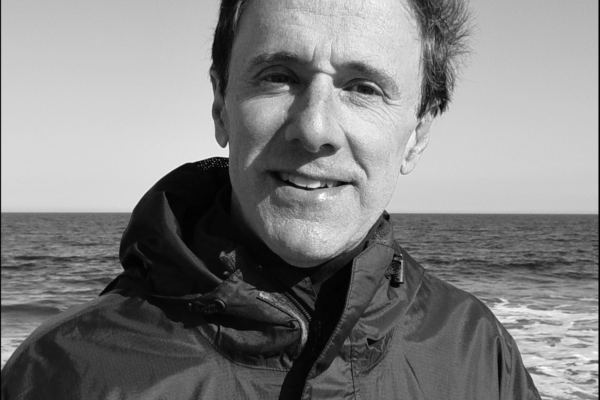By Kayla Tanenbaum
Before becoming an author, Larry Tye was an award-winning journalist, from 1986-2001, at The Boston Globe. He uses his background journalism to write nonfiction books on a wide variety of topics: his first biography, The Father of Spin, tells the story of Edward L.Bernays, the Public Relations pioneer. It’s an excellent biography, but the title alone grants him some points. He is also the author of Home Lands (a look at the “Jewish renewal,” how the idea of diaspora has changed), Rising from the Rails (an exploration of how the black men who worked on George Pullman’s railroad sleeping cars helped start the Civil Rights movement), Shock (a journalistic, first-person account of electroconvulsive therapy), Satchel (a biography of baseball pioneer Satchel Paige), and Superman (a biography, so to speak, of the fictional hero). His newest work, Bobby Kennedy: The Making of a Liberal Icon, is a biography of Bobby Kennedy and an account of his transformation into the liberal reformer he is known as today. Below, Larry Tye and Kayla Tanenbaum talk politics — both Bobby Kennedy’s and contemporary — and the craft of writing biography.
Kayla Tanenbaum is a student at Columbia University’s graduate writing program in the nonfiction concentration. Her bimonthly column features interviews with authors that reveal stories, lessons and realizations of interest to all readers – and to other writers, in particular – and pairs best with these authors’ works, as they emerge, throughout the year. Tanenbaum’s candor and wit slice clean lines across her subjects’ ideas. As an interviewer, she candidly reveals as much about the life of a writer in New York – hers and her subjects’ – as she exposes about the success and authorial presence to which we all aspire.
This transcript has been edited for clarity.
Kayla Tanenbaum: I’m interested in the book’s dedication. You dedicate it to your mentor, Bill Kovach, and his mentor, John Seigenhaler. Why them?
Larry Tye: It was the two of them who inspired me write this book. I was intrigued by why two of the hardest-nosed journalists that I’d ever met, who inspired my generation of reporters, had fallen in love once in their life with a politician, and it was the same one. I wanted to understand what it was about Bobby Kennedy that would make rhinoceros-hided journalists like Kovach and Seigenthaler, along with David Halberstam and Jack Newfield – all of whom felt it was their job was to put politicians in jail, or at least to keep them honest – to actually go to work for a politician.
KT: Why do you think mentors are so valuable? Do you think all writers should seek out mentors?
LT: I think journalists, authors, and even plumbers ought to have a mentor. A mentor can set a general model and ethical standards on what a given career ought to look like.

KT: Why did so many journalists fall in love with Kennedy?
LT: Because he was honest. Because he was authentic. Because he was all kinds of things that, because we have become so cynical about politics, we don’t expect any politician can be. We were equally cynical 50 years ago, but he Bobby was a politician who showed that he could change and get better. He started his career as an anti-communist Cold Warrior, and he ended up as a liberal. The idea that a politician could change without being a flip-flopper – that such transformation could be heart-felt and real – was truly interesting to me.
KT: That’s interesting because you worked as a journalist, and I think the expectation is that journalists are neutral. Did your affection for Bobby Kennedy color your writing of him, in process or product?
LT: I started out with Bobby as my hero. I found more flaws that I had seen in just about anybody that I have profiled or investigated. He lied and distorted. He got his brother Jack elected president through some hard-headed, steel-fisted tactics that made him a role model to the ultimate conniving politician, Richard Nixon. Yet at the end, Bobby had learned lessons and transformed in a way that I felt was authentic.
In the end, he was more of a hero to me than ever. I believe that heroes are only legitimate when they’re flesh-and-blood. I tried to be objective, and I was hard enough on Bobby that a lot of his fans and family resented much of what was in the book. Other people said I was too easy on him.
KT: What did you consider when beginning to write a biography of a member of one of the most mythologized, written-about families in America?
LT: I didn’t think about that while writing. If there have been 110 books written about someone, you have to have enough pride and ego to think you can bring something unique to the 111th. Most importantly, I felt a responsibility to the 400-450 people I interviewed for this book, many of them in their eighties and nineties. A good number of them died during the three and a half years I spent writing the book. I wanted to do justice to the time they spent with me, the stories they told, and the Bobby Kennedy they adored, or at least most of them did.
KT: Can you speak a bit about your research methods and maybe some challenges you found while doing a book of this scope?
LT: My research method is a scorched-earth process: read everything that anybody has ever written (I read around 500 books, along with tens of thousands of newspaper and magazine articles). Dig up all the new archival materials you can, along with unpublished memoirs. Talk to everyone who’s still alive, from fans to critics, family and friends to colleagues. The last question you need to ask everybody you interview, here as with any book, is: who else should I talk to? I got to people that hadn’t talked before, like Ethel Kennedy who in 50 years hadn’t talked at length to an author or journalist.
If you’re coming along late in the process, you have challenges and you have advantages. One advantage was that the last really good biography of Kennedy had been written 15 years ago, so lots of new stuff was available such as new historical analyses of issues that Bobby was involved with, as well as new papers on him, and from him, that had been made public recently. The other advantage is that, regardless of whether I wrote a good biography or a bad biography, I would be the last person who would ever talk to most of these people because Bobby would have turned 90 in November, and all of his contemporaries and friends and family are disappearing. I had the last shot of getting to these people while they’re still around to tell their stories.
KT: You really do show how Bobby Kennedy had changed as a politician, and how he grew into his liberalism. Do you think it’s possible for politicians in today’s political climate to change genuinely, and if so, is there an analogue to Bobby Kennedy alive today?
LT: I think it is not only possible, but it is more essential than ever, as our world changes so fast and fundamentally, for politicians to adjust and change. Ideally they don’t just blow with the political winds, but defy conventional thinking and political polling and focus groups and all that stuff. I think if they can’t change, then they will never be able to adjust and will never be able to grow.
KT: Do you have anything to say to people with ambitions of becoming a biographer?
LT: A good biography is not just a story of one man or woman. A good biography uses that life as a lens into bigger issues. I wrote a biography of Bobby Kennedy where I used his life as a way to understand how America changed from the era of Eisenhower in the conservative 1950’s to the tumultuous 1960’s. He was there helping to steer that change and being steered by it. Biographers always are looking for the bigger issues that an individual life helps illuminate.
You have to, every day, not get discouraged by the amount of information you have to process. I had thousands of pages of notes. Yet there’s nothing more fun than piecing it all together into a story.
KT: In terms of prose style and creating a narrative, how do you take information that’s often factual and dry, and turn it into something engaging to read, both in terms of structure and style?
LT: One practice that I use now is to try to think of what my book talk will be like before I even start writing the book. In a talk, you’re out there, whether with 200 people or 25 people, engaging them by trying to tell them a story that they will sit and listen to for an hour. You can watch their eyes and their faces to know whether you’re losing them or holding them. That’s what you’re trying to do in every page of a book as you write it.
KT: What writing techniques do you use to turn facts into a narrative that reads like fictional narratives do?
LT: You sift out the story in things. The political figures that I interviewed for this book liked to talk in generalities. They’ll say, “Oh Bobby was a passionate character,” or, “He was an introspective guy.” Don’t accept those generalities as the answers, in the same way that you don’t write those generalities in your work. You’re looking for stories, for compelling narratives that help readers understand who your subject is and make them care. The overarching narrative of the book is a story, but, more importantly, there are a million little stories on every page.
KT: What do you want people to take away from the book?
LT: That we can all, as clichéd as this sounds, can make a difference and that we damned well have a responsibility to try to do so. That was why Bobby would go on college campuses across America and tell students that there is something profound that they could do if they tried. He tried to kick them in the butt and say, “If you don’t do this, you’re letting down yourselves, your country, and your kids.” Partly by guilt, partly by speaking honest truth to them, and partly by inspiring them, he made people see what they could do.




